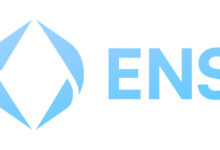Will Censorship Fork Ethereum?

Ethereum may soon split into two, according to some developers. As the second largest blockchain network vies for mainstream acceptance, it has increasingly fallen under the microscope of governments and regulators eager to tame the platform.
The US government’s vision for Ethereum – which involves regulating certain kinds of blockchain apps out of existence – is at odds with some of the core principles that the platform was founded on.
Ideas like “censorship resistance” and “credible neutrality” may be thrown out the window as big businesses and average users – folks comfortable with a more heavily regulated crypto experience – enter the Ethereum arena.
The most likely path forward for Ethereum, sources tell CoinDesk, may be two versions of the Chain: one regulated, one not.
This article originally appeared in Valid Points, CoinDesk’s weekly newsletter breaking down Ethereum’s evolution and its impact on crypto markets. Subscribe to get it in your inbox every Wednesday.
Ethereum’s ideology
Crypto was founded with a strong, albeit hard-to-pin-down ideological bent. Generally, censorship resistance and credible neutrality sit at this ideology’s core.
“I actually think most people in the Ethereum space agree with the notion that on Ethereum, everyone is treated equally,” Martin Köppelmann, a long time Etheruem developer and the founder of the privacy-focused Gnosis blockchain, told CoinDesk.
“If you have an idea for an [app], or if you should deploy an asset, even if you do a Ponzi scheme or whatever, the platform treats you in a neutral way,” he explained. “I feel like it’s important to have one place where, even at a geopolitical scale, you don’t have the fear that one party could just, say, freeze the accounts or the assets of another party.”
Köppelmann contrasts this approach with “the Facebooks and Twitters of the world,” where if you do or say something wrong, “suddenly, from one day to another, they say, ‘Sorry, you’re not allowed to do this anymore. You’re out.’”
Köppelmann uses the terms “censorship resistance,” “credible neutrality,” and “‘permissionless innovation” to describe Ethereum’s hands-off ethos.
Regulators take notice
Increasingly, major financial institutions, giant corporations, and hordes of retail investors are choosing Ethereum as their blockchain of choice. But with them has come more oversight and less tolerance for Etheruem’s more permissive founding ethos.
“Ethereum is still by far the best we have, in a way, but I would still say that it’s at least scratching on this promise, or starting to violate this promise,” Köppelman warned.
The most recent example of this oversight – which builders like Köppelmann are calling an act of overreach – has been the U.S. Department of the Treasury’s sanctions against Tornado Cash, an Ethereum “mixer” program that makes it possible for users to send and receive crypto without leaving behind a trail.
Exactly what the Office of Foreign Assets Control (OFAC) sanctions mean for Ethereum remains unclear. However, many of the U.S.-based nodes that operate the Ethereum network – the folks responsible for writing and confirming transactions to Ethereum’s ledger – have interpreted the sanctions as requiring them to ignore transactions linked to the Tornado Cash program.
A few “censoring” nodes won’t prevent Tornado-linked transactions from making it onto the Ethereum ledger, though it will increase the time it takes them to get there.
If enough nodes were in favor of censoring the chain – enough nodes to make up two-thirds of the network’s “stake” – it would become altogether impossible for Tornado transactions to get written to the Ethereum ledger, at least under the network’s current rules.
“Tornado became a second-class citizen on Ethereum,” lamented Köppelman. “It’s still of course possible to use it and so on, but the fact is your transaction – if it touches Tornado or some of those addresses – will be treated differently.”
A major censorship milestone
Köppelmann has been closely watching the number of nodes that are censoring out Tornado transactions.
Last week, he wrote that Ethereum had reached a “sad milestone in censorship.” According to his data, 51% of Ethereum blocks were censoring out Tornado transactions.
Read more: Censored Ethereum Blocks Hit the 51% Threshold Over the Past 24 Hours
Why was this number a milestone? “This means if the censoring validators would now stop attesting to non-censoring blocks they would eventually form the canonical, 100% censoring chain,” Köppelmann wrote.
Several developers contacted by CoinDesk predicted that Ethereum would, at some point in the future, split into two chains: a censored chain and an uncensored one.
Köppelman differentiates Ethereum’s “core community” from newer, more financially oriented entrants. It’s this divide, he says, which could cause a chain split.
“There are those voices that I would say are not what I would consider the Ethereum core community – but some investors or some VCs – […] say, “Well, yeah, Etherereum simply needs to be OFAC compliant,’” said Köppelman.
“Within Ethereum – within what I would consider the Ethereum core community,” he continued, “I don’t know a single person that says no Tornado cash transaction should be allowed on Ethereum.”
Justin Drake, an Ethereum researcher at the nonprofit Ethereum Foundation, was one of the developers that told CoinDesk a chain split “will likely happen.”
“What tends to happen with these forks is that one of them is very, very much dominant over the other,” Drake predicted. “We’ve seen this with [Ethereum Classic,] we’ve seen this with even [ETH POW],” he said, referring to two previous Ethereum forks.
In terms of its projected size relative to the uncensored Ethereum chain, Drake thinks the censored chain “will be relatively small.” He wagers a guess: “Definitely less than 10%” of the main chain in terms of total value captured.
The primary Ethereum community’s massive decentralized finance, stablecoin and NFT economies will make it hard for a new chain to garner that much steam, Drake suggested.
Different strokes, different folks
Drake differentiates the audiences of the potential censored and uncensored chains. For instance, an uncensored chain is “more attractive to builders.”
According to Drake, “When you build an application and there’s potential censorship, then your application could be censored.” To builders, Drake says that the potential for censorship would be received as “platform risk.”
As for the audience of a censored chain, Drake thinks “there’s this sense that the censored ones could be more attractive to users. And then the reason is that if a specific country says, ‘No, we don’t want you to use this,’ I think most citizens will just comply.”
He added, “I think what will happen is that if you want to build infrastructure which is going to last for a very long time, and it’s going to be global, then you’re going to build on the uncensored version. If, instead, you want to cater to one specific jurisdiction, maybe only the U.S., or if you want to do something specific – just gambling or something – you want to be very, very regulated.”






 Bitcoin
Bitcoin  Ethereum
Ethereum  Tether
Tether  USDC
USDC  TRON
TRON  Dogecoin
Dogecoin  Cardano
Cardano  Bitcoin Cash
Bitcoin Cash  Chainlink
Chainlink  LEO Token
LEO Token  Stellar
Stellar  Litecoin
Litecoin  Hedera
Hedera  Monero
Monero  Dai
Dai  OKB
OKB  Cronos
Cronos  Ethereum Classic
Ethereum Classic  Gate
Gate  Cosmos Hub
Cosmos Hub  VeChain
VeChain  Algorand
Algorand  KuCoin
KuCoin  Stacks
Stacks  Tether Gold
Tether Gold  Theta Network
Theta Network  Zcash
Zcash  IOTA
IOTA  Tezos
Tezos  TrueUSD
TrueUSD  NEO
NEO  Polygon
Polygon  Decred
Decred  Dash
Dash  Ravencoin
Ravencoin  Zilliqa
Zilliqa  Qtum
Qtum  Synthetix Network
Synthetix Network  Basic Attention
Basic Attention  0x Protocol
0x Protocol  Siacoin
Siacoin  Holo
Holo  DigiByte
DigiByte  Nano
Nano  Enjin Coin
Enjin Coin  Ontology
Ontology  Status
Status  Hive
Hive  Waves
Waves  Lisk
Lisk  Pax Dollar
Pax Dollar  Steem
Steem  BUSD
BUSD  Numeraire
Numeraire  NEM
NEM  Huobi
Huobi  OMG Network
OMG Network  Bitcoin Gold
Bitcoin Gold  Ren
Ren  Augur
Augur